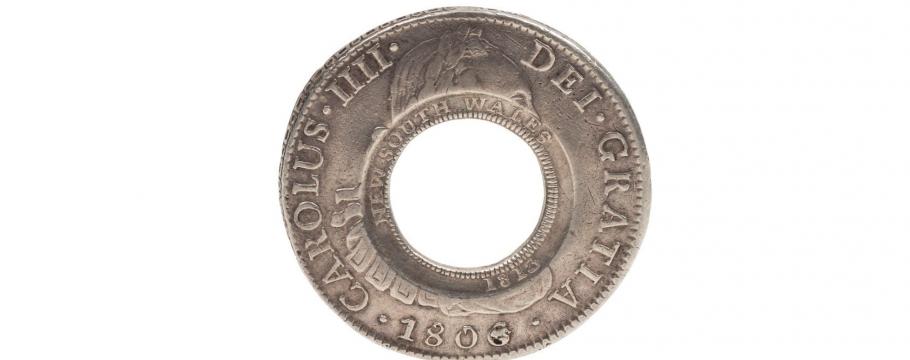
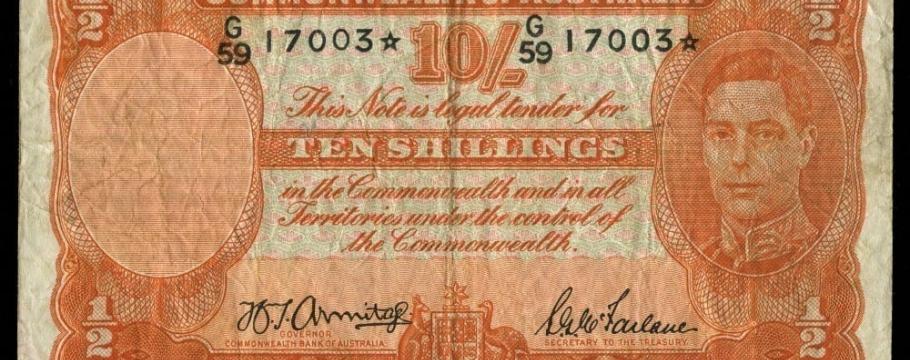

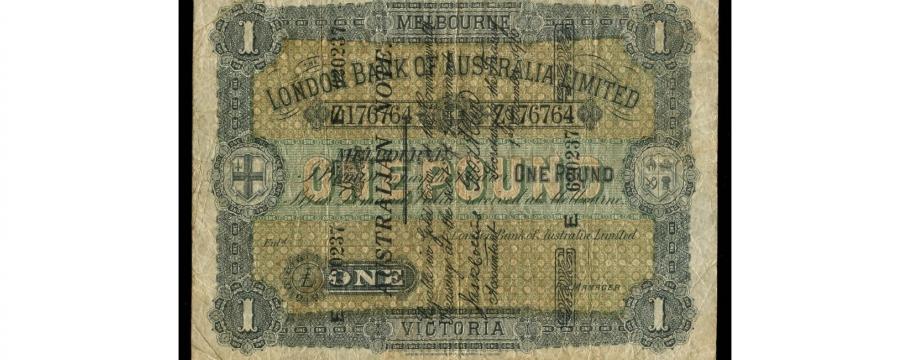
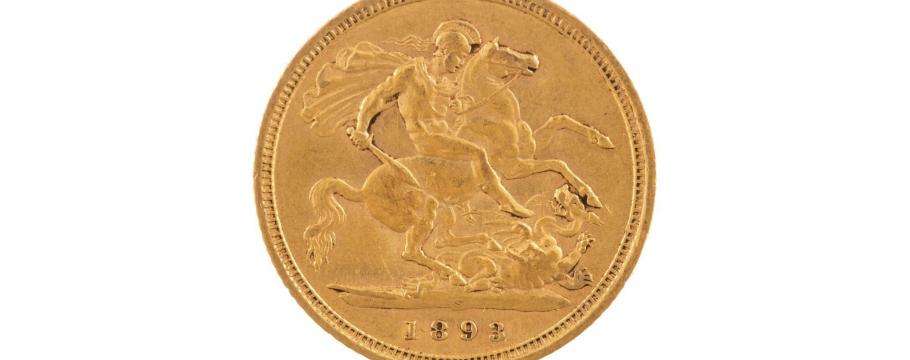

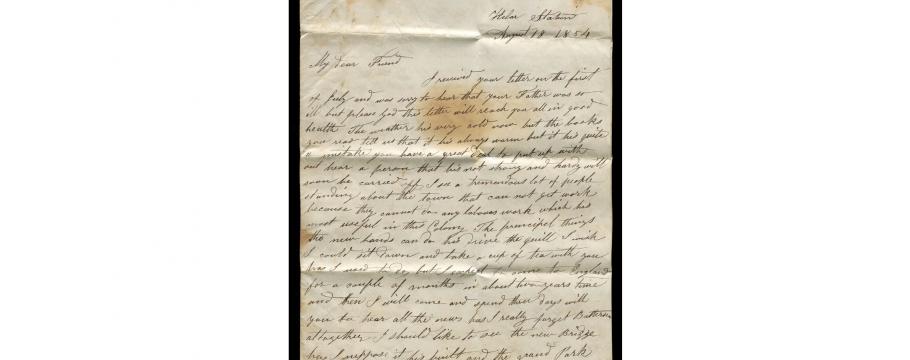
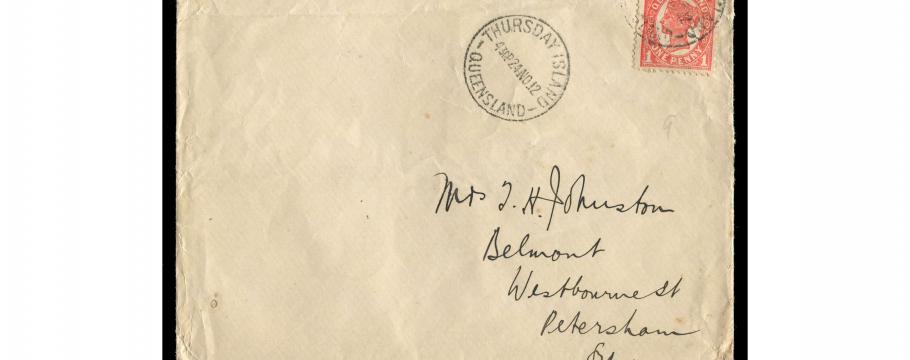


Holey dollar and star banknotes highlight Melbourne coin and banknote auction
Author: Richard Brewster | Posted: 1st February, 2023
Melbourne-based Leski Auctions director Charles Leski is rubbing his hands with glee at the number of star banknotes he has on offer at his forthcoming Coins, Banknotes and Stamps auction from 10am Thursday February 16 at 727-729 High Street, Armadale.
“Auction houses are lucky to see one a year,” he said. “Two or three is a big number and we have eight in the one auction (lots 433-440).”
Star notes are replacement banknotes – issued once a damaged note has been withdrawn from service.
The Reserve Bank never issues the same number twice so, to avoid duplication, it replaces the last digit with a star.
Mr Leski said the star notes on offer were a rare opportunity for a serious collector to upgrade his or her collection.
They are among other magnificent specimens at the auction including a 1924 Kell/Collins five-pound note (lot 409), a 1933 Riddle/Sheehan example of the same value (lot 410) and a 1910 Collins/Allen superscribed London Bank of Australia one pound (lot 411).
Coin offerings among the more than 900 total auction lots are headed by a rare 1813 holey dollar (lot 60) struck on a Charles IIII 1806 eight reales from the Mexico City Mint with a catalogue estimate of $120,000-$150,000.
Holey dollars were used in New South Wales in the early days of penal settlement.
Australia’s first coins, the currency was based on Spanish reales of eight from which the centre was struck to form a holey dollar and dump (valued at 15 pence).
Since the colony had no access to metal from which to make blanks, in 1813 Governor Lachlan Macquarie acquired 40,000 Spanish silver dollars and ordered the centre be cut from each one to make two coins.
The holed dollar was over-stamped around its internal edge with the date 1813 and given a value of five shillings and became known as the Holey Dollar.
There are several late 19th century and early 20th century Australian gold half sovereigns (lots 61-73) and sovereigns (lots 74-165) – along with a rare Australian 1922/21 overdate threepence (lot 178).
Mr Leski believes the fact that the gold collection is listed at bullion estimates, allowing the market to find its own level, presents a great opportunity for buyers to start their own collection.
There are several fascinating stories among the postal history section of the auction including lot 678, an August 1854 letter with its original envelope from James Dixon in Melbourne to his friend S. Wilson in Battersbea, England.
A policeman who migrated to Victoria with two brothers and their father (by now returned to England), Dixon is extremely candid about life in the young colony.
“I see a tremendous lot of people standing about the town because they cannot do any laborious work which (h)is most useful in this Colony …
“The diggings are still holding out very fare. It would be a shocking thing if they were to fail (h)as there would be no work for them and they would take to bushranging.
“A fortnight ago there was a hundred of us went up to the diggings at Bendigo. The Chinese. By the time we got up they were quiet.
Their (h)is a great number of blacks out hear all they where (h)is possum rug, they eat Kangaroos and all kinds of animals.”
In other words, according to Dixon, many people are lazy and, if it weren’t for the Bendigo gold diggings (only recently discovered at the time), bushranging outlaws would be rife, the Chinese cause a lot of trouble, and Aborigines are scantily clothed and survive on wild animals (something they had been doing for thousands of years).
Another interesting story involves a November 24, 1912 postal cover to Sydney via Thursday Island accompanied by a two-page letter written aboard the SS Van Waerwijck at the Gulf of Papua, citing details from a traveller’s diary noting that the natives are “keen traders” wanting “one bob”, “two bob” or sometimes “one shilleen” (sic) for articles, and Port Moresby is not much of a place…I saw a prison gang (native) working on the roads. The greater part of the European population seems to spend its spare time drinking.”
A 1932 registered airmail cover from Melbourne to Switzerland (lot 522) featuring a twopenny, threepenny and five-shilling Sydney harbour bridge stamp set is another intriguing lot.





